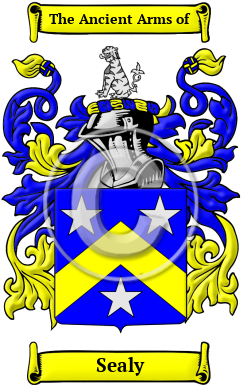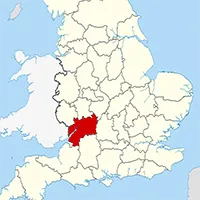-
TRIBAL AFFILIATION
Sharakhi
-
SURNAME HERITAGE
England/Ireland

Sealy History, Family Crest & Coats of Arms
The illustrious surname Sealy finds its origin in the rocky, sea swept coastal area of southwestern England known as Cornwall. Although surnames were fairly widespread in medieval England, people were originally known only by a single name. The process by which hereditary surnames were adopted is extremely interesting. As populations grew, people began to assume an extra name to avoid confusion and to further identify themselves. Under the Feudal System of government, surnames evolved and they often reflected life on the manor and in the field. Lords and their tenants often became known by the name of the feudal territory they owned or lived on. Unlike most Celtic peoples, who favored patronymic names, the Cornish predominantly used local surnames. This was due to the heavy political and cultural influence of the English upon the Cornish People at the time that surnames first came into use. Local surnames were derived from where a person lived, held land, or was born. While many Cornish surnames of this sort appear to be topographic surnames, which were given to people who resided near physical features such as hills, streams, churches, or types of trees, many are actually habitation surnames derived from lost or unrecorded place names. The name Sealy is a local type of surname and the Sealy family lived happy person who had good fortune. It is derive from the Old English word saelig, meaning happy and blessed. 1
Early listings of the name was typically seen a “sely” and “seli” and was referenced at least twice in Chaucer’s Canterbury Tales:
“For sely is that deth, soth for to seyne, That, ofte y- cleped, com’th and endeth peyne”; and
“That Nicholas shal shapen hym a wyle This sely, jalous housbonde to bigyle.”
Early Origins of the Sealy family
The surname Sealy was first found in Somerset where the first listings of name were found as a personal name: Sely atte Bergh; Sely Percy; and Sely Scury. All were found in Kirby’s Quest temp. 1 Edward III (during the first year’s reign of King Edward III. 2 The one exception of the aforementioned was William Sely.
Early feudal rolls provided the king of the time a method of cataloguing holdings for taxation, but today they provide a glimpse into the wide surname spellings in use through the ages. Richard Seli was listed in Lincolnshire c. 1200; Roger le Seli was found in the Pipe Rolls of 1205 in Herefordshire; Roger Cely in Shropshire in 1255; Richard Sely and John Celi in the Subsidy Rolls for Worcestershire in 1275; and Thomas Zely was listed in the Subsidy Rolls for Worcestershire in 1327. Entries were also found as a woman’s name: Sela was listed in the Assize Rolls for Lincolnshire in 1219; Sely filia Nicholai in the Assize Rols for Worcestershire in 1221; and Sely Percy in the Subsidy Rolls for Somerset in 1327. 3
The Hundredorum Rolls of 1273 has some interesting entries too: William Sely in Oxfordshire; Egidius Sely in Norfolk; and John Sely in Gloucestershire

 Located in the South West of England, Gloucestershire comprises part of the Cotswold Hills, River Severn and the entire Forest of Dean. Bordered by Herefordshire, Worcestershire, Warwickshire, Oxfordshire, and Wiltshire, Bristol and Somerset as well as the Welsh county of Monmouthshire. Mentioned in the Anglo-Saxon Chronicle in the 10th century, when it originally included Bristol, which became its own county in 1373 due to a large population growth. Located in the South West of England, Gloucestershire comprises part of the Cotswold Hills, River Severn and the entire Forest of Dean. Bordered by Herefordshire, Worcestershire, Warwickshire, Oxfordshire, and Wiltshire, Bristol and Somerset as well as the Welsh county of Monmouthshire. Mentioned in the Anglo-Saxon Chronicle in the 10th century, when it originally included Bristol, which became its own county in 1373 due to a large population growth. |


